
Hospital Bed vs Adjustable Bed: What's Better for Recovery?
Key Takeaways
- Hospital beds offer medical-grade features like Hi-Lo functionality, Trendelenburg positioning, and medical-grade durability ($1,000-$3,500)
- Adjustable beds provide comfort-focused features at a lower price point ($400-$2,500) but lack medical safety features
- Medicare coverage is available for hospital beds when medically necessary but rarely covers adjustable beds
- Recovery needs requiring clinical positioning, caregiver access, or safety features are best served by hospital beds
- Side rails and mobility assistance features, standard on hospital beds, are crucial for post-surgical patients
- Pressure relief is superior in hospital beds designed for long-term medical use vs. comfort-focused adjustable beds
- Weight capacity is typically higher in hospital beds (450-1000 lbs) compared to residential adjustable beds (300-400 lbs)
Hospital beds and adjustable beds both offer inclined positioning options, but they serve fundamentally different purposes. When recovering from surgery, illness, or injury, choosing the right bed can significantly impact recovery time, comfort, and safety.
After extensive research comparing both options, the Icare Adjustable Electric Home Hospital Bed - IC333 stands out as the superior choice for recovery purposes. This medical-grade bed combines essential hospital bed features with home-friendly aesthetics, making it ideal for long-term recovery while blending seamlessly into residential environments.
In this comprehensive guide, we'll examine the critical differences between hospital beds and residential adjustable beds to help you determine which option best suits your specific recovery needs.
Key Differences Between Hospital Beds and Adjustable Beds
While both bed types offer adjustable positions, they differ significantly in design purpose, features, and suitability for medical recovery.
Defining Features and Primary Purposes
Hospital beds are purpose-built medical devices designed for patient care and recovery, featuring:
- Medical-grade durability: Engineered for 24/7 use with reinforced frames and heavy-duty components
- Safety features: Integrated side rails, emergency controls, and locking mechanisms
- Caregiver-focused design: Height adjustability for better access, easier transfers, and reduced back strain
- Clinical positioning: Precise adjustments for specific medical needs (Trendelenburg, reverse Trendelenburg)
- Compatibility: Designed for medical accessories (IV poles, trapeze bars, bed tables)
An excellent example is the Costcare Full Electric Hospital Bed B135C, which provides full electric medical functionality at $1,298.
Adjustable beds are consumer products designed primarily for comfort and lifestyle enhancement:
- Comfort focus: Designed for reading, watching TV, and addressing mild comfort issues
- Aesthetic priority: More visually appealing with decorative headboards and upholstery
- Limited adjustment: Usually head and foot elevation only, without height adjustment
- Residential design: Sized to match standard bedroom furniture (Queen, King, etc.)
- Non-medical: Not classified as medical devices and lack clinical features
Height Adjustability (Hi-Lo Function)
One of the most significant differences between these bed types is the height adjustment capability.
Hospital beds feature Hi-Lo functionality that provides:
- Variable height range: Typically 7"-30" from floor to mattress platform
- Transfer safety: Can lower to make getting in/out safer for patients
- Fall prevention: Ultra-low positions minimize fall injury risk
- Caregiver ergonomics: Raises to optimal working height, reducing back strain
- Wheelchair transfers: Adjusts to perfect height for lateral transfers
The Medacure Ultra Low Hospital Bed ULB7/30-CLS exemplifies this feature with its 7"-30" height range and stable locking system at $1,741.
Adjustable beds typically:
- Maintain a fixed bed height (cannot be raised or lowered)
- Require external assistance tools for transfers
- Pose greater fall risks during recovery
- May cause caregiver strain during assistance
- Create challenges for wheelchair transfers
Safety Features for Recovery
For patients recovering from surgery or illness, safety features become critically important.
Hospital beds include essential safety features:
- Integrated side rails: Prevent falls while providing repositioning support
- Emergency controls: Quick position changes in medical situations
- Locking mechanisms: Secure bed position and prevent unwanted movement
- Medical certification: Meet FDA standards for patient safety
- Anti-entrapment design: Prevent patients from getting caught in rail gaps
The Costcare Homecare Half Rails Model BPR120C are designed specifically for safe patient support during recovery.
Adjustable beds typically lack:
- Medical-grade safety rails (any rails are usually aftermarket additions)
- Emergency lowering capabilities
- Medical certifications
- Proper anti-entrapment designs
- Secure locking systems for stability
Positioning Capabilities for Medical Recovery
Specific positions are often prescribed during recovery to address medical needs.
Hospital beds offer precise clinical positioning:
- Trendelenburg: Feet elevated above head for circulatory needs
- Reverse Trendelenburg: Head elevated above feet for respiratory support
- Cardiac chair: Specialized position supporting heart function
- Medical-grade articulation: Precise angle adjustments for therapeutic positioning
- Position memory: Save prescribed positions for consistent therapy
The Trendelenburg Costcare Adjustable Medical Bed B337 offers these specialized medical positions for $1,675.
Adjustable beds are more limited:
- Basic head and foot articulation only
- Lack precise angle measurements
- Cannot achieve true Trendelenburg positions
- Limited range of movement
- Primarily designed for comfort, not therapeutic positioning
Mattress Compatibility and Pressure Relief
Recovery often requires specialized mattress surfaces to prevent complications.
Hospital beds are designed for medical mattresses:
- Segmented design: Mattresses flex precisely with bed articulation
- Pressure redistribution: Specialized zoning prevents pressure ulcers
- Therapeutic surfaces: Compatible with alternating pressure and low air loss systems
- Edge reinforcement: Provides support during transfers and edge-sitting
- Clinical materials: Antimicrobial, fluid-resistant, and flame-retardant coverings
Hospital bed mattresses like the Emerald 5-Zone Medical Foam Mattress are specifically engineered for medical recovery.
Adjustable beds typically use:
- Residential mattresses not designed for extended recovery
- Materials prioritizing comfort over medical needs
- Designs without proper pressure redistribution for immobile patients
- Coverings not suitable for medical situations
- Compromised articulation that creates pressure points
Recovery Scenarios: When Each Bed Type Works Best
Different recovery situations require different bed features. Here are the scenarios where each bed type performs best.
Post-Surgical Recovery
After surgery, patients have specific needs that impact bed choice.
Hospital beds excel for post-surgical recovery because:
- Precise positioning: Maintains surgeon-recommended angles
- Easier transfers: Height adjustment simplifies getting in/out with limited mobility
- Infection control: Wipeable, antimicrobial surfaces reduce infection risk
- Caregiver access: Enables wound care without straining patient or caregiver
- Pain management: Therapeutic positioning helps reduce post-surgical pain
The Ultra Low Hospital Bed Medacure ULB3.9 with its extreme low height capability ($2,240-$2,440) is especially valuable for surgery recovery.
Adjustable beds may be sufficient only for:
- Minor outpatient procedures
- Brief recovery periods
- Patients with full mobility
- Situations not requiring special positioning
- Recovery not involving wound care
Long-Term Rehabilitation
For extended recovery periods, durability and specialized features become essential.
Hospital beds are superior for rehabilitation because:
- Medical-grade durability: Withstands continuous adjustment and daily use
- Accessibility features: Supports therapy and exercise activities
- Integration: Accommodates medical devices and therapy equipment
- Progressive positioning: Allows for gradual increases in elevation as strength improves
- Prevention: Designed to avoid secondary complications during long recoveries
The TransferMaster Full Electric Hi-Lo Hospital Bed Supernal 3 offers exceptional durability and rehabilitation support features starting at $3,441.
Adjustable beds fall short for rehabilitation due to:
- Consumer-grade motors not designed for frequent adjustments
- Limited positioning options for therapy protocols
- Inability to integrate medical accessories
- Lack of caregiver support features
- Reduced durability under intensive rehabilitation use
Respiratory Conditions
Breathing difficulties require specific positioning capabilities that impact recovery.
Hospital beds better serve respiratory patients through:
- Precise incline control: Achieves exact angles recommended by pulmonologists
- Reverse Trendelenburg: Optimally positions patients with COPD, pneumonia, or sleep apnea
- Multi-point articulation: Creates positions that maximize lung expansion
- Stable positioning: Maintains therapeutic angles consistently during sleep
- Medical integration: Accommodates respiratory equipment and oxygen delivery systems
The Icare High Low Hospital Bed IC222 provides excellent respiratory positioning options starting at $2,800.
Adjustable beds provide limited respiratory support due to:
- Insufficient maximum incline angles for severe conditions
- Inability to achieve precise medical positions
- Sliding issues that compress the diaphragm
- Limited articulation points
- Incompatibility with medical respiratory equipment
Circulatory and Edema Management
Proper circulation and fluid management are critical aspects of many recovery situations.
Hospital beds excel in circulatory support through:
- True Trendelenburg: Elevates legs above heart level for enhanced venous return
- Precision elevation: Maintains exact angles for optimal fluid reduction
- Independent leg elevation: Targets specific limbs with edema
- Therapeutic alternation: Allows programmed position changes to stimulate circulation
- Medical assessment: Supports proper examination of circulatory status
The Costcare Trendelenburg Adjustable Hospital Bed B730 offers superior circulatory positioning with its advanced Trendelenburg features for $4,300.
Adjustable beds provide only basic circulation support with:
- Limited foot elevation angles
- Inability to achieve true Trendelenburg positioning
- Fewer articulation points
- No specialized edema management features
- Less stable positioning for overnight elevation
Cost Comparison and Insurance Considerations
The financial aspects of beds for recovery involve more than just the purchase price.
Price Range and Value Comparison
Hospital beds range in price from:
- Manual: $800-$1,200
- Semi-electric: $1,000-$1,800 (like the Costcare Semi-Electric Bed B120C at $1,068)
- Full-electric standard: $1,200-$2,500
- Specialized features: $2,500-$5,000
- Premium bariatric: $3,000-$10,000
Additional costs include:
- Medical-grade mattress: $300-$2,000
- Side rails (if not included): $100-$300 per pair
- Bed accessories: $50-$500 depending on needs
Adjustable beds typically cost:
- Basic models: $400-$1,000
- Mid-range: $1,000-$2,000
- Premium: $2,000-$5,000+
Additional costs may include:
- Mattress upgrade: $500-$3,000
- Aftermarket safety attachments: $200-$500
- Modifications for medical use: $300-$1,000
Insurance Coverage and Medicare Reimbursement
A significant advantage for hospital beds in recovery situations is potential insurance coverage.
Hospital beds may qualify for coverage when:
- Prescribed by a physician for a medical condition
- Deemed medically necessary for recovery
- Provided through an approved DME provider
Coverage typically includes:
- Medicare Part B: 80% of approved amount after deductible
- Medicare Advantage: Similar to Part B but network restrictions may apply
- Private insurance: Variable coverage depending on policy and medical necessity
- Medicaid: May cover 100% for qualifying individuals
Adjustable beds rarely qualify for insurance coverage because:
- They are not classified as durable medical equipment (DME)
- They lack the necessary medical-grade features
- They are considered comfort items rather than medical necessities
- They don't meet medical coding requirements for reimbursement
This insurance coverage distinction can result in hospital beds being significantly more affordable for recovery despite higher list prices.
Long-Term Value and Resale Considerations
When evaluating total cost, consider the complete lifecycle of each bed type.
Hospital beds often provide better long-term value through:
- Durability: 10-15 year typical lifespan under heavy use
- Serviceability: Parts available and designed for replacement
- Adaptability: Can be reconfigured as medical needs change
- Resale market: Strong demand for used medical equipment
- Rental options: Available for temporary recovery needs
Adjustable beds may have limitations in:
- Durability: 5-8 year typical lifespan for motors and electronics
- Serviceability: Limited parts availability after warranty period
- Adaptability: Fixed design not easily modified for changing needs
- Resale value: Rapidly depreciates and limited secondhand market
- Rental availability: Fewer options for temporary use
Practical Considerations for Home Recovery
Beyond clinical features, practical aspects of using beds in home environments impact recovery.
Space Requirements and Room Layout
Hospital beds require planning for:
- Standard dimensions: Typically 36" wide by 80" long (narrower than residential beds)
- Clearance needs: 3-4 feet on all sides for caregiver access
- Doorway access: Ensuring 36" clearance for delivery
- Weight considerations: Reinforced flooring may be needed for heavier models
- Electrical access: Proximity to grounded outlets
The Emerald Hospital Adjustable Bed Oasis 52200 offers a space-efficient design for home recovery at $1,940.
Adjustable beds have different considerations:
- Residential dimensions: Twin, Full, Queen, King, etc. (wider but same length)
- Standard bedroom design: Fits conventional furniture arrangements
- Delivery challenges: May not disassemble for difficult access points
- Split designs: King/Queen sizes often split in middle, creating a gap
- Surge protection: May require specialized electrical protection
Aesthetics and Home Integration
The appearance of recovery beds can impact psychological well-being.
Modern hospital beds are increasingly designed for home aesthetics:
- Residential headboards/footboards: Available in wood finishes
- Concealed medical features: Motors and mechanisms hidden within design
- Color options: Moving beyond institutional white
- Bed skirt compatibility: Allows for decorative elements
- Designer models: Some brands focus on home-friendly appearances
The top-recommended Icare Adjustable Electric Home Hospital Bed - IC333 exemplifies the integration of medical functionality with residential aesthetics at $3,200.
Adjustable beds offer:
- Furniture-like appearance: Designed to match bedroom décor
- Upholstered elements: Fabric and decorative details
- Size matching: Coordinates with standard bedroom sets
- Hidden technology: Mechanisms concealed within base
- Designer styles: Contemporary and traditional options
Caregiver Considerations and User Independence
Recovery often involves a balance between caregiver support and patient independence.
Hospital beds support caregiving through:
- Height adjustment: Reduces back strain during care activities
- Side rail design: Provides leverage for repositioning patients
- Access features: Facilitates bathing, dressing, and wound care
- Quick adjustments: Multiple control options for emergency positioning
- Caregiver controls: Separate control panels for helper operation
The Medacure Split Frame LX-BARI Adjustable Bariatric Electric Hospital Bed offers excellent caregiver support features for $2,558.
Hospital beds also promote independence through:
- Accessible controls: Positioned for patient operation
- Mobility assistance: Features that help with sitting up and transfers
- Self-repositioning tools: Trapeze bars and other mobility aids
- Customizable height: Can be set for independent transfers
- Progressive recovery: Adaptable as patients regain function
Adjustable beds have limitations for caregiving:
- Fixed height: Creates ergonomic challenges for caregivers
- Limited access: Harder to perform care activities
- Fewer grip points: More difficult to reposition patients
- Minimal accessories: Not designed for medical care support
- Control limitations: Often single remote without caregiver options
Our Top Recommendation for Recovery
After analyzing both options across multiple recovery scenarios, the Icare Adjustable Electric Home Hospital Bed - IC333 emerges as the best overall choice for recovery at home.
This premium hospital bed achieves the ideal balance of medical functionality and residential aesthetics, featuring:
- Full electric operation: Independent control of head, foot, and height positions
- Home-friendly design: Less institutional appearance that blends with home décor
- Hi-Lo functionality: Height range suitable for both fall prevention and caregiver access
- Medical-grade construction: Durable components designed for recovery demands
- Compatibility: Works with pressure-relief mattresses and medical accessories
For those with budget constraints, the Costcare Full Electric Hospital Bed B135C offers excellent recovery support at a more accessible price point of $1,298.
For specialized recovery needs involving respiratory conditions, the Trendelenburg Costcare Adjustable Medical Bed B337 provides advanced positioning capabilities at $1,675.
Frequently Asked Questions
Is a regular adjustable bed sufficient for someone recovering from surgery?
For minor surgeries with short recovery periods, a regular adjustable bed might be sufficient if the patient has good mobility and no fall risk. However, for major surgeries, extended recovery, or patients with limited mobility, a hospital bed is strongly recommended. Hospital beds provide medical-grade positioning precision, height adjustability for safer transfers, built-in safety features, and support for caregivers. These features significantly reduce complications and make recovery smoother for both patient and caregivers.
Can Medicare or insurance cover an adjustable bed instead of a hospital bed?
Medicare and most insurance providers rarely cover standard adjustable beds because they're classified as comfort items rather than medical equipment. To qualify for coverage, a bed must meet specific medical equipment criteria including height adjustability, clinical positioning capabilities, and medical-grade construction. Hospital beds that meet these criteria can be covered up to 80% by Medicare Part B when prescribed by a physician as medically necessary. For insurance coverage, always choose a true hospital bed from an approved DME provider.
What are the main safety differences between hospital beds and adjustable beds?
Hospital beds include several critical safety features that adjustable beds lack: properly designed side rails that prevent both falls and entrapment, height adjustability that can lower the bed close to the floor to minimize fall injuries, locking mechanisms on wheels and positions, emergency quick-release features, and medical-grade electrical safety standards. Additionally, hospital beds are tested and certified for medical use, while adjustable beds are only tested for residential comfort use and don't undergo the same rigorous safety certification.
Can I make a regular adjustable bed more suitable for recovery?
While you can add some features to an adjustable bed, it cannot be fully converted to meet medical recovery needs. Possible modifications include adding aftermarket side rails (though these won't match medical safety standards), using transfer boards and step stools for safer access, adding pressure-relief mattress toppers, and incorporating wedge pillows for more positioning options. However, you cannot add crucial features like height adjustability, medical-grade articulation, or true Trendelenburg positioning, which are built into the frame of hospital beds.
How long should someone use a hospital bed during recovery?
The recommended duration for hospital bed use depends on your specific medical condition and recovery progress. For major surgeries or debilitating conditions, medical professionals typically recommend using a hospital bed for the entire recovery period, which might range from several weeks to months. For progressive conditions or permanent mobility limitations, long-term or permanent use may be necessary. The decision should be made in consultation with your healthcare provider, who can evaluate your specific mobility challenges, fall risk, positioning requirements, and caregiver support needs.
What mattress options work best for recovery in each bed type?
Hospital beds work with specialized medical mattresses designed specifically for pressure relief and articulation. Options include segmented foam mattresses with pressure-point distribution, alternating pressure air mattresses that actively prevent pressure ulcers, low air loss systems that manage moisture and temperature, and lateral rotation mattresses for pulmonary conditions. Adjustable beds typically use split residential mattresses which, while comfortable, lack the therapeutic properties of medical mattresses and may create pressure points when articulated. Memory foam and latex are the best residential options, but still don't match the clinical benefits of true hospital bed mattresses.
Are hospital beds difficult to set up in a home environment?
Modern hospital beds are designed with home setup in mind and are not as challenging to install as many fear. Most models arrive partially assembled and can be completed with basic tools in under an hour. Many retailers offer delivery and setup services, often including staff training on bed operation. The main considerations are ensuring adequate doorway clearance (typically need 36" minimum), allowing sufficient room around the bed for caregiver access, and providing a properly grounded electrical outlet. For temporary recovery, some companies also offer rental options with complete setup and removal services.















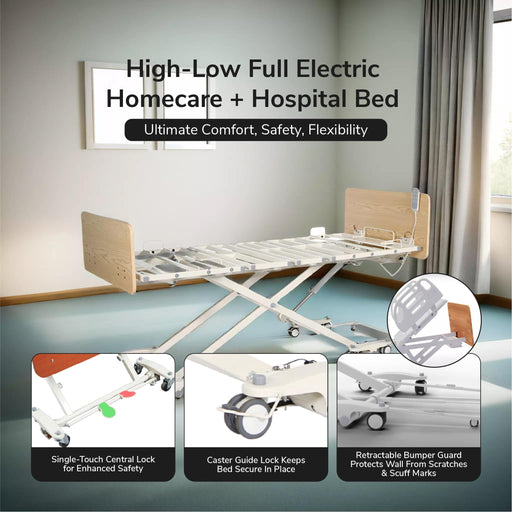
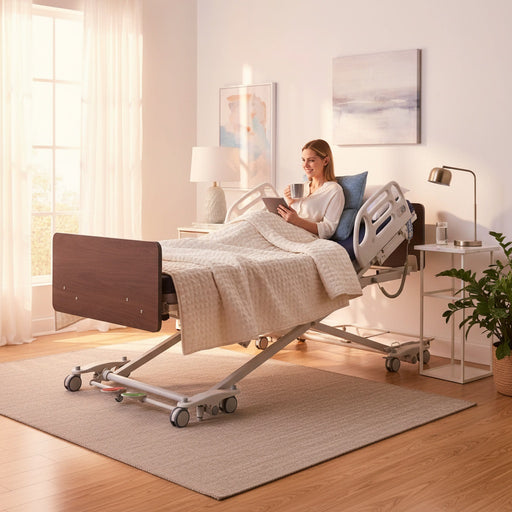
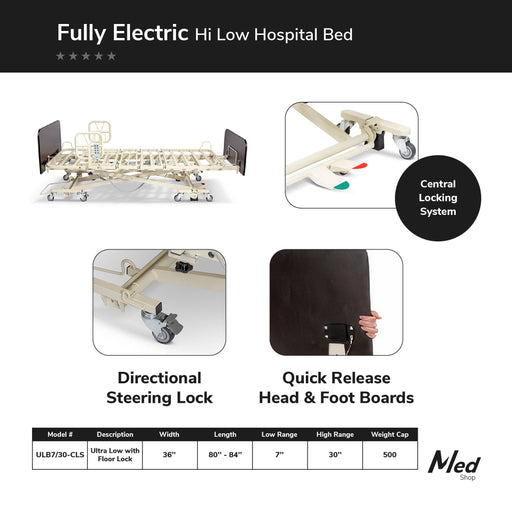
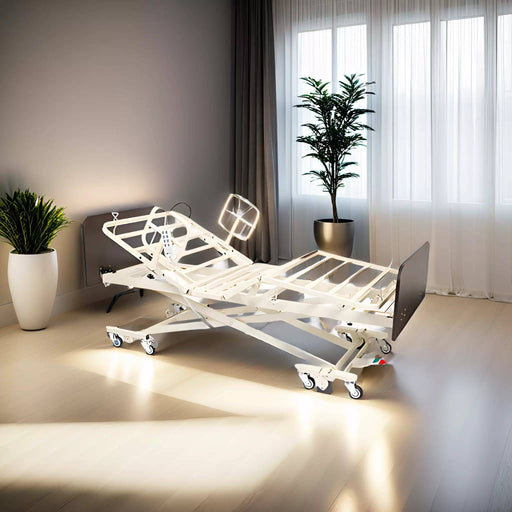


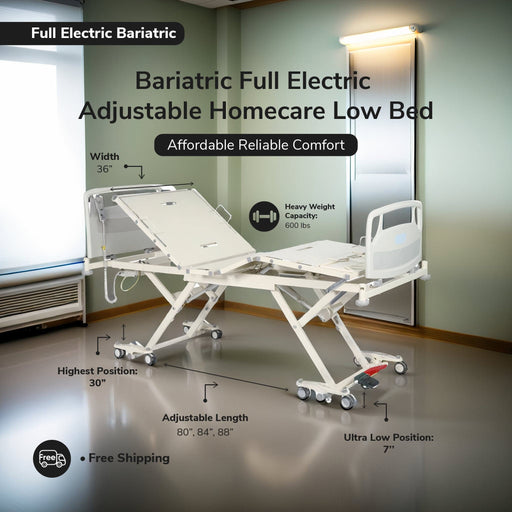
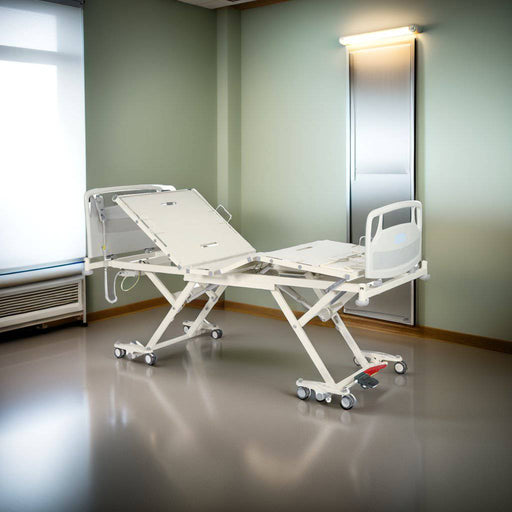
Leave a comment